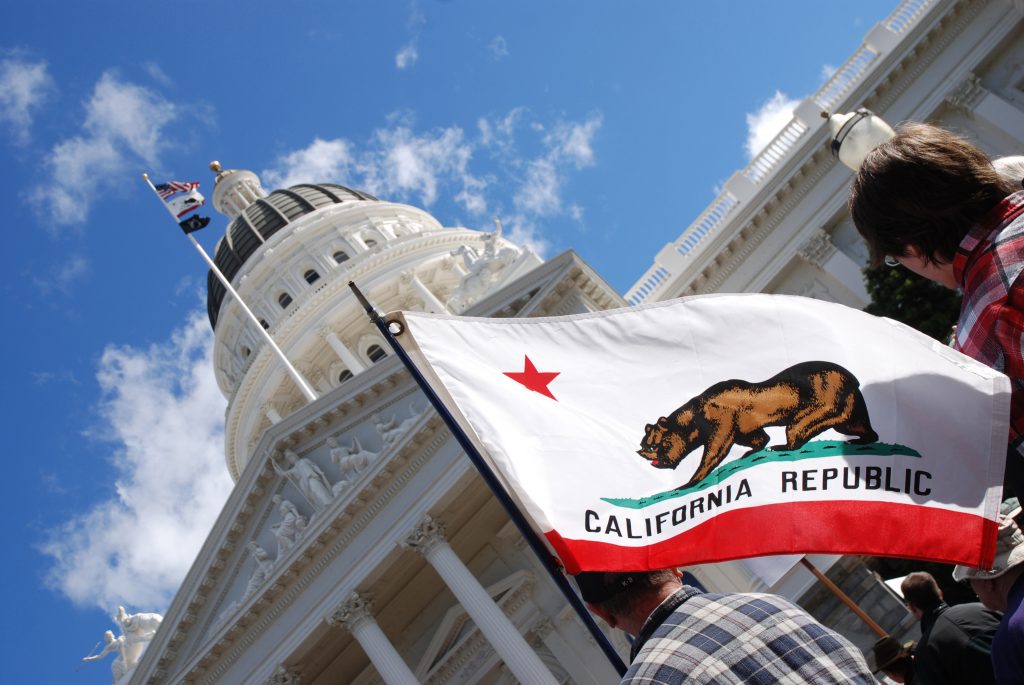My resolution for my beloved but beleaguered home state of California is both simple and complicated: Be better.
In fact, Old Girl, don’t feel like you’re limited to just the next 346 days. Let’s make this resolution a special one, and push it forward through the next decade.
What will the most populous, and most misunderstood, state in the union look like in the year 2030?
It was once said that, in the Golden State, the streets were paved with, well, gold. But, if we’re being honest, in the last 10 years the avenues have been strewn with homeless people.
Homelessness is just one of the reasons that many Californians are either leaving the state, or thinking about doing so.
A poll by the Public Policy Institute of California found that 48% of residents believe the state is going in the wrong direction.
Some people will tell you that California’s homeless crisis is a direct result of what has become a severe lack of affordable housing and the fact that rental fees and home prices have continued to soar.
Could be. It sometimes feels as if you have to rob banks to live here. In 2017, the median price of a home in California was more than 2.5 times the median price nationwide. In the five largest cities — Los Angeles, San Diego, San Jose, San Francisco, and Fresno — the median home price ranges between $500,000 and $1.5 million.
Other people claim liberal policies are to blame, citing permissive regulations that make it more difficult for cities to remove homeless people.
Makes sense. If you want to see a Democratic-controlled city government get tough in shuffling the homeless off the streets, just wait until the Democratic National Convention comes to town. The homeless get removed faster than you can say, “San Francisco 1984.”
Still other people say that the surge in the homeless population comes from the fact that many of those who have nowhere to live have decided that they might as well live in a warmer climate.
That is also possible. California still has plenty of sunshine, although the state’s 40 million residents can be forgiven for thinking that state officials have begun “taxing” this natural resource by making it so expensive to live here.
Time for a qualifier. It’s true that one in five California residents live in poverty when you factor in the cost of housing and child care. And it doesn’t make the state any more affordable, as the taxes are brutal, with a state sales tax of 7.25% and a top state income tax rate of 12.3%.
Groceries, gas, and entertainment are all more expensive than they are in neighboring states like Oregon, Nevada, or Arizona. This is due, in part, to a state minimum wage that, in 2020, will grow to $12 per hour, on its way to $15 per hour in 2023.
But as I was recently reminded by a friend who, a few years ago moved from Texas to California, the property taxes here are actually quite the bargain compared to what they are in other states.
Thank you, Proposition 13. The 1978 ballot initiative amended the state constitution to limit the tax rate for real estate.
Also, wages and salaries in California often tend to be higher than they are elsewhere.
Remember that $12-per-hour minimum wage? The national figure is $7.25 per hour, and it hasn’t budged for the last decade. So, in California, you spend more but also tend to earn more.
But let’s look ahead to the next decade. There is no question that this state has seen better days.
The heyday was probably between the 1930s and 1960s, where everyone from Okies like Merle Haggard’s kinfolk to Armenians eager to till the soil of the Central Valley to the Beverly Hillbillies thought California was the place they ought to be.
Walt Disney gazed into Southern California orange groves and caught a glimpse of Tomorrowland. Gov. Edmund “Pat” Brown Sr. built highways into the sky and a public university system that became a model for the country. For California, the 2020s should be the “Quality of Life” decade.
Whether it’s creating movies and television shows, iPhones, and laptops, or fruit and vegetables, the state remains enormously productive. We produce more than our share of goods.
But we’re also living way beyond our means. Our state leaders and lawmakers, starting with Gov. Gavin Newsom, need to craft a new “Marshall Plan” for the state.
Like the blueprint that rebuilt Europe after World War II, a new plan for California would help make the state more affordable, more livable, and more user-friendly to business, investment, and retirees.
We need to cut taxes, trim regulations, build reservoirs, get workers for agriculture, build affordable housing, reform the school system, and rein in public employee pensions. And that’s just for starters.
To borrow a phrase, it’s time to “Make California Great Again.”

